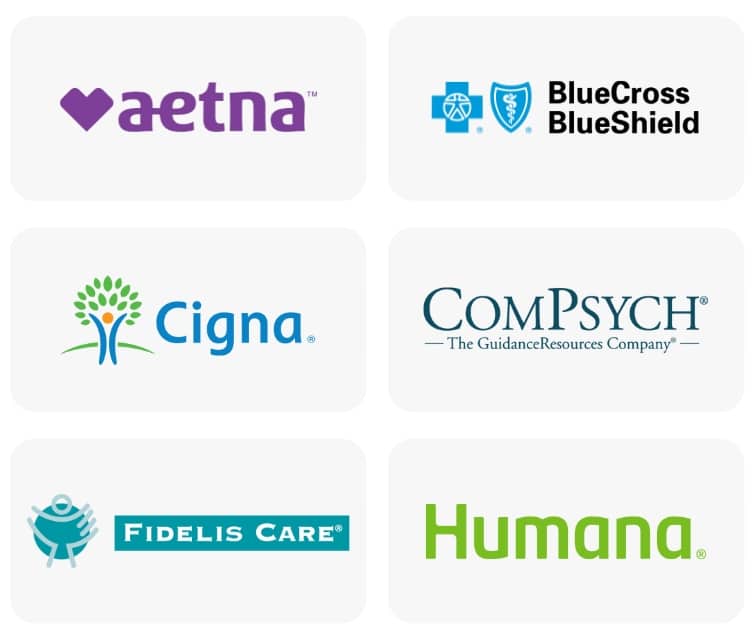Skip To Section
Both physical and psychological ecstasy symptoms, such as mood swings and anxiety, as well as strong cravings and sleep difficulties, can be signs of addiction. People who are struggling could also overlook their obligations because their desire to consume drugs takes precedence. Physical symptoms may include a deterioration in general health and dehydration. Identifying these symptoms early is critical to receive the appropriate assistance and begin the healing process.

What Is Ecstasy?
Ecstasy is a unique drug with both hallucinogenic and stimulant effects. It provides users with an altered perception of reality. The drug goes by several street names like:
- MDMA
- Ecstasy
- Molly
- E
- X
- Adam
- Love drug
It most commonly goes by ecstasy or Molly. MDMA stands for 3,4-methylenedioxymethamphetamine. It’s a synthetic drug that increases blood flow and neurotransmitters to increase energy. Many people report feeling excited, happy, and “physically warmer” when they use it.
Ecstasy “high” symptoms may give you a distorted sense of time and interpretation of your surroundings. Some physical senses may feel enhanced. For example, colors may be brighter, or textures may feel softer or more engaging.
Behavioral and Physical Signs of Ecstasy Use
If you’re concerned that a loved one is abusing Molly, look for these physical and behavioral warning signs:
- Increased energy
- Overactive or underactive
- Repetitive speech patterns
- Dilated pupils
- Malnutrition
- Clothes don’t fit the same
- Weight loss
- Change in eating habits
- Change in sleeping patterns
- Lack of personal hygiene
Physical ecstasy symptoms that only the user may be privy to include:
- Muscle tension
- Involuntary teeth clenching or grinding
- Nausea
- Dehydration, especially when you mix ecstasy with alcohol
- Elevated body temperature, leading to heat exhaustion or stroke
- Increased blood pressure, heart rate, and breathing rate
- Flu-like symptoms like the chills or sweating
- Blurred vision
The physical side effects of ecstasy[1] can be serious. Many people have become too dehydrated, suffered from heatstroke, or had cardiovascular events after taking MDMA. Users have been hospitalized and have even died due to these adverse health effects.
"*" indicates required fields
Fill out the form below and one of our admissions team members will reach out to you:
"*" indicates required fields
Mental and Emotional Signs of Molly Use
People take MDMA for the ecstasy high symptoms, which are mainly psychological in nature. The emotional and mental signs of MDMA use include:
- Feeling and acting less inhibited, like dancing freely
- Extremely friendly
- Increased empathy and attraction toward others
- Feeling very confident and assured
- Experiencing euphoria
- Laughing easily
While these effects can seem desirable, the brain processes that create ecstasy high symptoms are the same ones that can lead to substance abuse and addiction or exacerbate mental illness. That’s because regularly using drugs or alcohol changes your brain. The central nervous system becomes reliant on drugs and alcohol to produce certain brain chemicals. This can lead to negative consequences like depression, anxiety, and withdrawal symptoms.
People with addictions find it difficult to control their patterns of abuse. Despite harmful consequences, they can’t seem to stop using drugs or alcohol. Some of the signs of a substance use disorder include:
- Unsuccessful attempts to decrease or stop using alcohol or drugs.
- Using substances as a coping mechanism — needing to take drugs or alcohol to deal with difficult emotions or feelings.
- Having a preoccupation with an addictive substance. Spending more and more time and energy finding ways of getting it and ruminating on when and how you will use it again.
- Experiencing withdrawal symptoms after the drug leaves your system or when you go for periods of time without it. This is your brain trying to rebalance itself without the presence of drugs and alcohol. Ecstasy withdrawal symptoms[2] may include cravings, anxiety, irritability, confusion, depression, difficulty sleeping, loss of appetite, paranoia, and cognitive issues.

What Causes Ecstasy Side Effects
When you use MDMA, it floods your brain with serotonin, a neurotransmitter that can be mood-altering in high quantities. This neurotransmitter is responsible for functions such as pleasure, sleep regulation, and heart rate. When your brain has more serotonin, you may feel empathetic and emotionally closer to people around you. This is a common ecstasy “high symptom.”
Molly’s side effects begin between 20 to 40 minutes after taking the drug, depending on the dose, purity, and method of consumption. Most people take MDMA orally and may experience nausea as the body digests the drug.
About an hour to 90 minutes after taking ecstasy or Molly, you hit peak effects, with intense psychedelic and emotional alterations. Effects of the drug last for about eight hours. Even if you’re not feeling the peak effects, you are still experiencing an impact on the drug. Side effects may feel more physical, which can be uncomfortable or dangerous.
Dangerous Molly Side Effects
Dangers from Molly’s side effects can increase depending on where and how you’re using it. For example, taking MDMA in a nightclub and then dancing for hours can lead to dehydration and heatstroke. This is because you’re in a hot, crowded environment and not drinking water.
The following are signs of heatstroke caused by MDMA:
- Elevated body temperature
- Changed mood, mental state, or behavior
- Hot, dry skin with no sweating or cessation of sweating
- Nausea and vomiting
- Rosy skin
- Accelerated breathing
- Rapid heart rate
- Headaches
Heatstroke is exacerbated by dehydration. Symptoms of dehydration include the following:
- Extreme thirst
- Urinating less
- Dark-colored urine
- Fatigue
- Dizziness
- Confusion
Symptoms of both dehydration and heatstroke can be masked by the effects of MDMA. If you would normally feel tired, you may be artificially stimulated. If you would normally feel thirsty, the psychedelic effects may mean you do not notice. If you would normally feel uncomfortable from a fast heartbeat, you may think you are just happy. The mental effects can make the physical effects worse since you are less likely to notice the symptoms.
Other factors can increase your risk for negative effects from Molly. Many people combine Molly with alcohol or other drugs. This can compound potentially dangerous short and long-term effects of alcohol and drugs. The National Institute on Drug Abuse warns that many times ecstasy is cut with dangerous substances like meth, cocaine, bath salts, or cough medicine, which can also greatly increase the chance of dangerous side effects.
Concerned About Ecstasy Use?
If you or someone you love is struggling with drug abuse, call our treatment facility. Our fully accredited addiction treatment centers offer research-based care for substance use disorders that will help you regain control of your life. Our treatment providers are compassionate behavioral health experts whose goal is to help you step into long-term sobriety and to regain a sense of fulfillment.
Footprints to Recovery’s treatment programs include:
- Medical detox
- Inpatient rehab
- Partial hospitalization programs
- Intensive outpatient programs
- Outpatient rehab
- Sober living residences
- Alumni peer recovery groups and events
Treatment for ecstasy addiction may begin with medical detox if you’ve been abusing other substances along with it. Most of the withdrawal symptoms from ecstasy[3] are psychological in nature, but our medical team can help you manage those uncomfortable feelings and emotional reactions.
Following detox, you’ll work in treatment to address the reasons why you abuse substances. This is sometimes due to underlying mental health disorders (co-occurring disorders or a dual diagnosis), post-traumatic stress disorder, low self-worth, underdeveloped coping skills, and early relationships. Through behavioral therapy and time in individual counseling, group therapy, and family therapy, you’ll connect with your authentic self, learn healthy coping skills, and heal from emotional wounds. These are all necessary for long-term recovery.
If you need help, we’re here for you. Footprints to Recovery has treatment locations in Colorado, Illinois, and New Jersey, and we’ve seen thousands of patients take back their lives from addiction. Call our recovery center today for a free, confidential consultation.
- Trends in MDMA-related mortality across four countries – PubMed
- MDMA (Ecstasy/Molly)
- MDMA and the Brain: A Short Review on the Role of Neurotransmitters in Neurotoxicity – PMC
- Overheating (hyperthermia) and ‘Water Intoxication’ (hyponatremia.) | The DEA: The definitive guide to MDMA (molly, ecstasy)
- The Brain & the Actions of Cocaine, Opioids, and Marijuana
- Ecstasy-Related Emergency Department Visits by Young People Increased between 2005 and 2011; Alcohol Involvement Remains a Concern
Our admissions team is available 24/7 to listen to your story and help you get started with the next steps.



